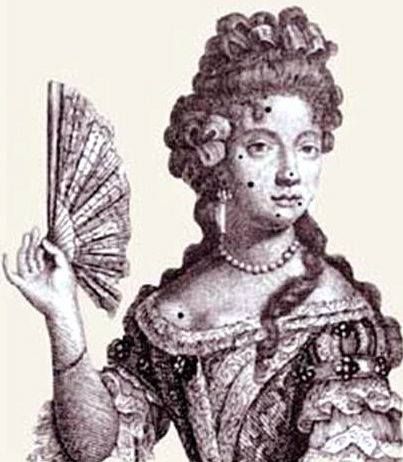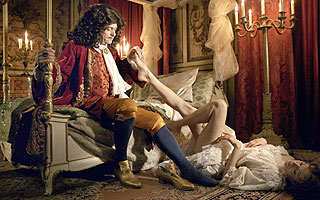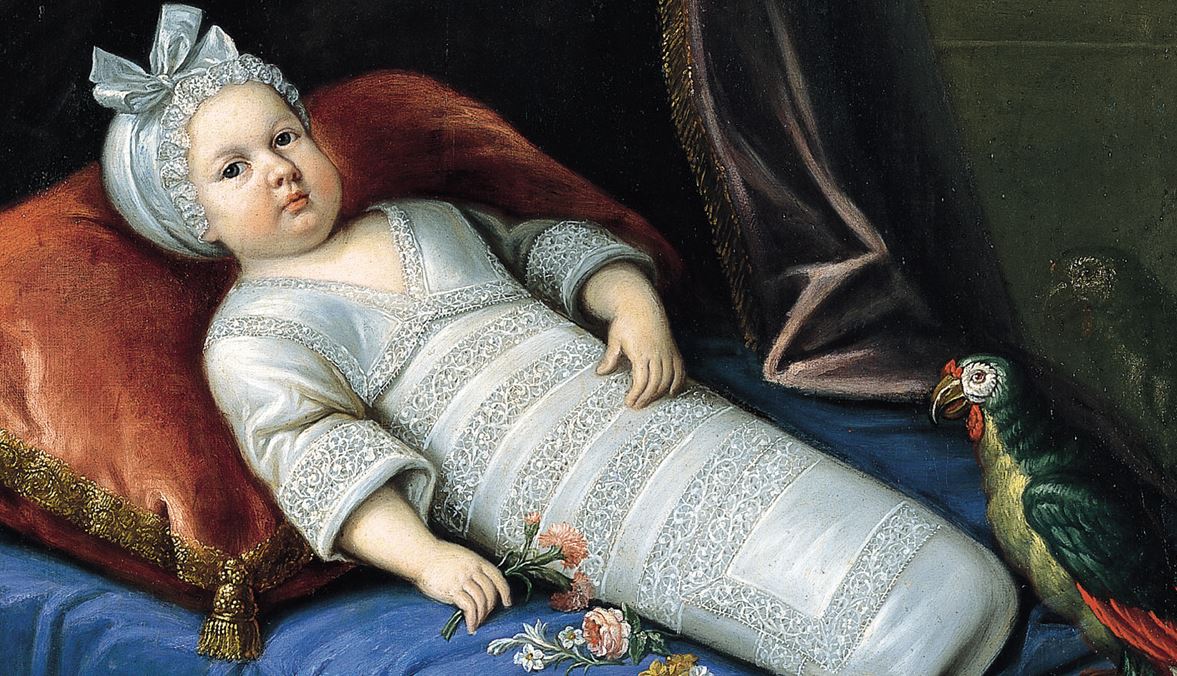Mouches
Mouches aka fake beauty spots were incredibly popular at the court of Louis XIV and worn by males and females alike.
 They were usually made of black silk, velvet, muslin or taffeta, but could also be made of leather or paper, and came in all sort of forms. The dot was the most common shape, followed by starts, little hearts, half-moons or crosses. But there were also more exotic shapes, like little insects, ships or carriages.
They were usually made of black silk, velvet, muslin or taffeta, but could also be made of leather or paper, and came in all sort of forms. The dot was the most common shape, followed by starts, little hearts, half-moons or crosses. But there were also more exotic shapes, like little insects, ships or carriages.
The fashionable courtier kept their mouches in so-called boîtes à mouches, little decorated boxes that often featured a small mirror. They were worn to hide skin blemishes, smallpox scars, signs of diseases like syphilis or herpes, but also to bring out the whiteness of the complexion or to guide eyes to an especially well-formed feature.
How many were worn depended on the occasion and the current fashion. The dames of the court usually wore more for court entertainments, up to ten or more, while being covered with them was not considered proper for church.
Depending on where they were placed, mouches could also tell something about their wearer. What exactly that was, changed with the fashion. The 19th century Grand dictionnaire universel du XIX. siècle by Larousse, for example, notes that la passionnée, worn close to the eye, meant a lady was quite passionate. L’enjouée, placed on both cheeks, meant a lady was fond of jesting and laughing. La baiseuse, worn at the corner of the lips, meant a lady was fond of kissing. La gaillarde, worn on the nose, meant the lady had a merry nature. Apart from the public known code, they could also be worn on certain spots to signal a lover in a private code.





